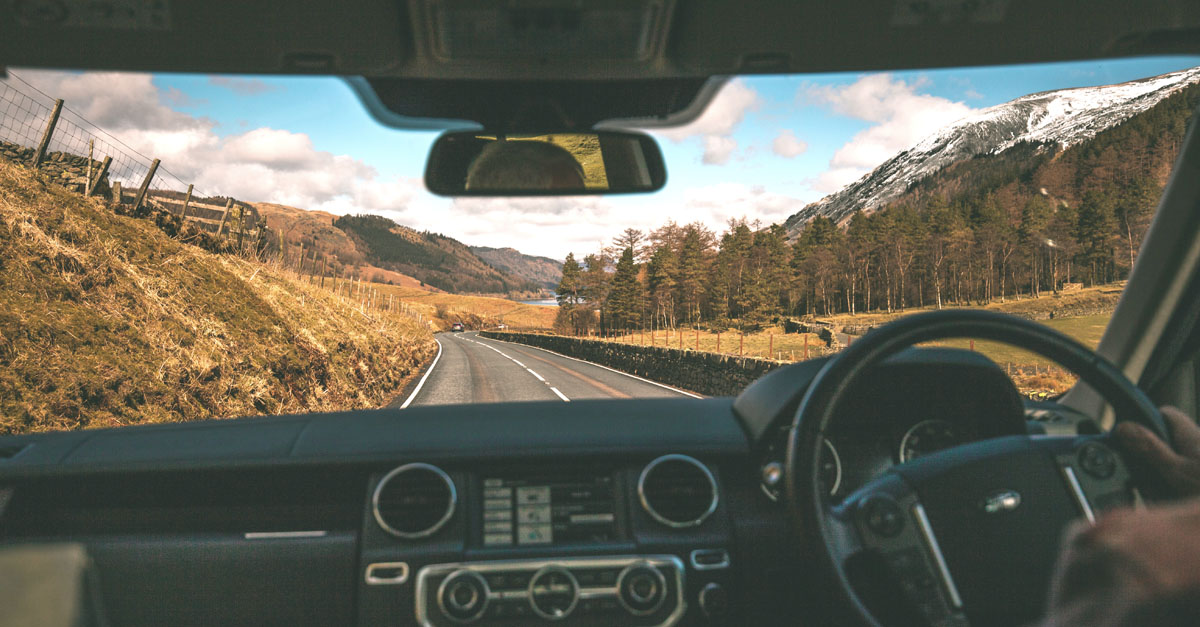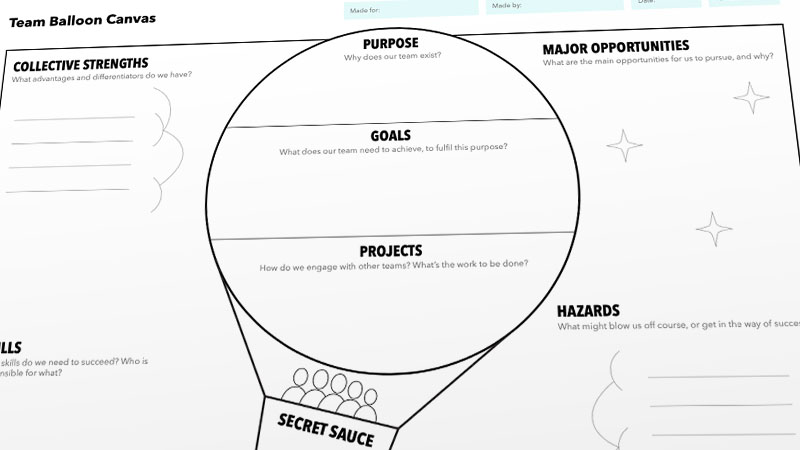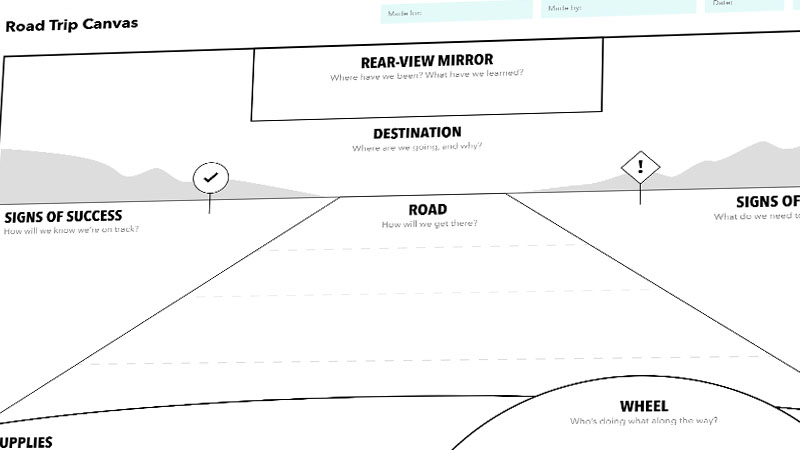In this post:
- Visual frameworks for mapping and strategy
- Reframing the strategic journey
- Introducing the Road Trip Canvas
- What's on the Road Trip Canvas?
- When to use the Road Trip Canvas
- How to use the Road Trip Canvas
Visual frameworks are fantastic to use in just about any meeting or workshop. Whether it's a simple layout of 3 columns in Trello for an online retrospective meeting, or a 20-foot-long customer service blueprint on a boardroom wall, they do such a great job in structuring and organising a group's thoughts and conversations, to help you get to the meeting's outcome more effectively.
Indeed, they act like a silent second facilitator in the room (or in the Zoom).
Everybody can see their collected thoughts, ideas and opinions in one connected space. This makes it easier to help new ideas and connections emerge, rather than just relying on everybody holding everything in their heads while talking.
Visual frameworks for mapping strategy and planning
There are tons of visual frameworks around to help groups discuss, align and decide on various aspects of strategy, from value proposition (Value Proposition Canvas) to business model (Business Model Canvas) to navigating internal and external factors on a business (Porter's 5 Forces), and many more.
The journey is a well-known metaphor to help think about how to execute on a strategy, which is when a lot of groups do strategic planning. It's a useful visual framework to help people conceptualise the main elements of a plan before diving into details. Visualising a journey on a wall, or in an online collaboration space, helps everybody to explore these elements and see how they are related.
We can use different visual flavours of this journey, too. A popular option is to draw a flag on a mountain, with a road leading up to that mountain, as a way of representing the main objective, and the major milestones along the way to reach that objective. The team can be represented either as a group of figures, or a smaller "container' of a bus, like in this example:
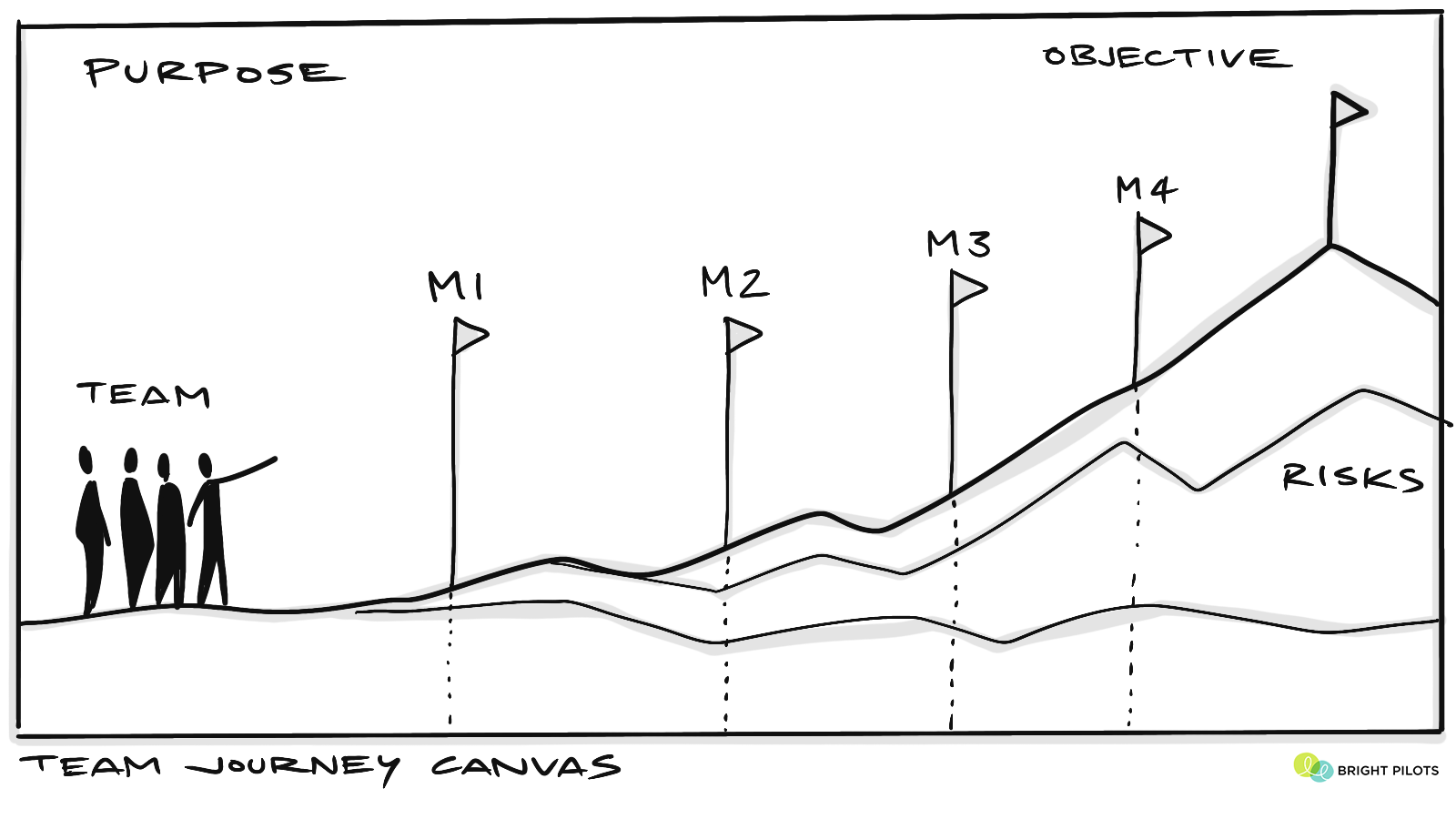
We could also represent the team in a metaphorical boat on the metaphorical water, where the objective is represented by a metaphorical flag on a metaphorical island, like in this example:
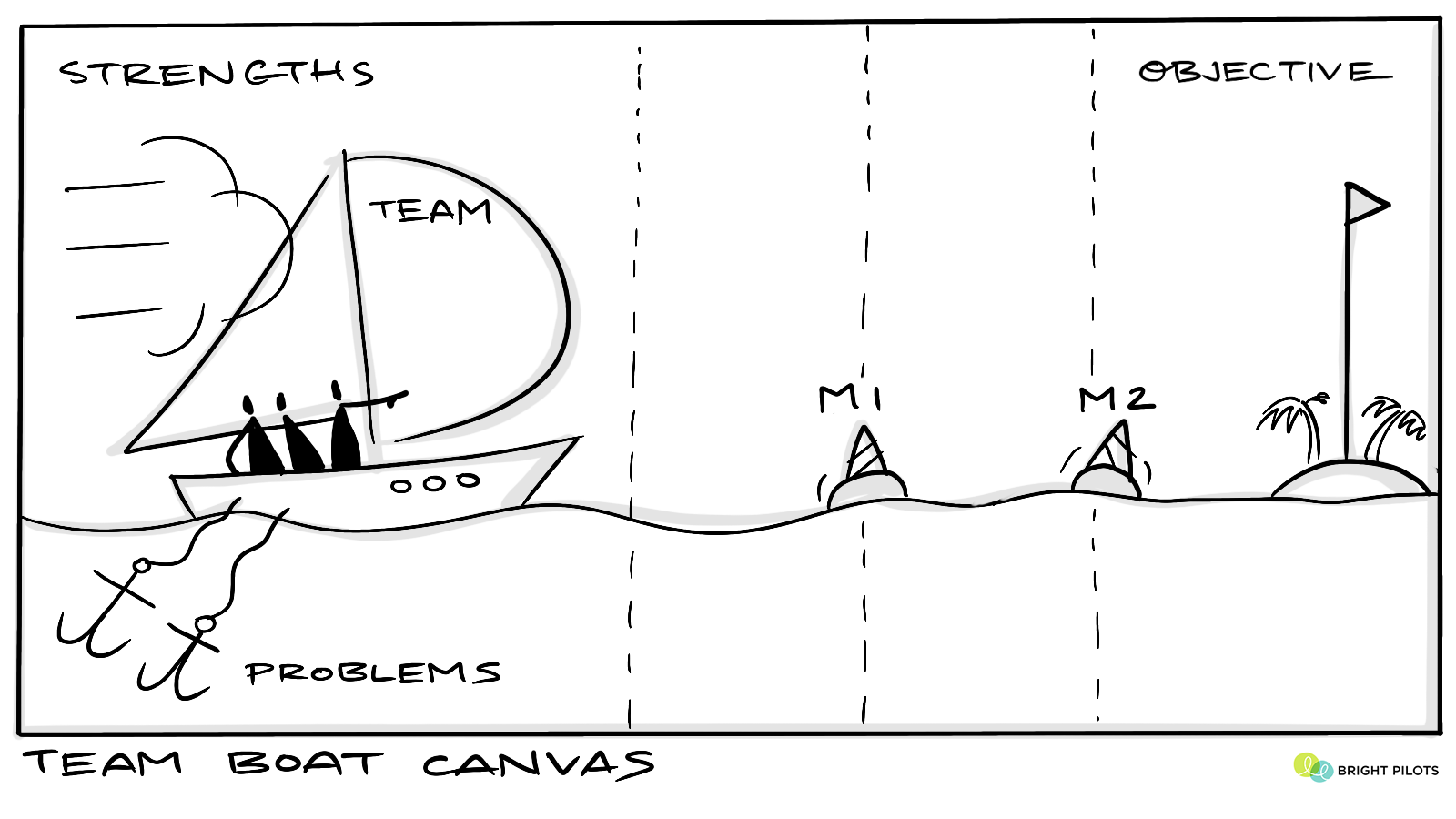
Or, we can use a hot air balloon, which seems more adventurous and fun, riding the winds toward the goal, like in this example:
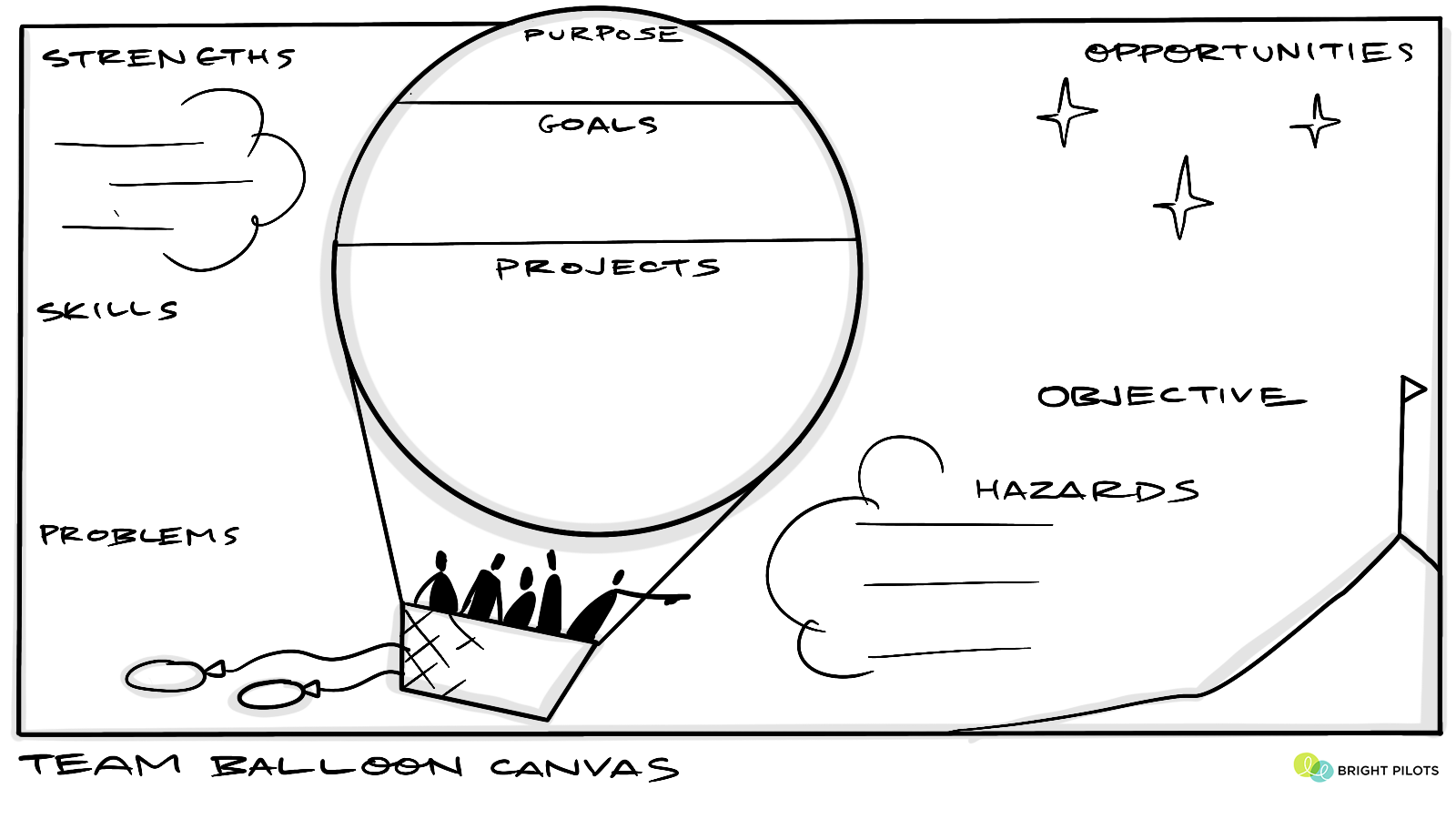
All of these three example layouts - or visual frameworks - can be enriched with other metaphorical details that are worth a group exploring, like obstacles and risks along the way (a bumpy road, choppy water, stormy weather), or opportunities to navigate by (stars in the sky), or weaknesses or redundancies to let go of (ballast sandbags, anchors).
Reframing the strategic journey
As I mentioned, I've used these visual frameworks a lot, and they really do help groups explore the details of envisioning and planning together.
I'm also a massive fan of using reframing techniques, to bring fresh perspectives to familiar problems and situations, to generate higher-quality thinking and ideas. I was recently designing a strategic planning session for a client when it hit me: I could reframe the perspective we take, when it came to visualising a vision and a plan.
Rather than being on the "outside' looking at ourselves taking a metaphorical journey, we could see the journey from the point of view of being inside a car! The next logical step, of course, was to "see' this as a road trip!
I really like this road trip perspective, because it puts the group in the journey, rather than just looking at the journey. It also brings them much closer together, as co-drivers of the journey. It also conjures up other interesting elements we associate with road trips, that have metaphorical value:
- Music! What's the "beat' of this journey? Are there different moods we'll go through?
- Snacks! What are the little things we need to sustain us along the way?
- Pitstops! What stops will we make along the way? Are there any weird "tourist traps' we should stop at, to get a cool picture? Or a waterfall, or other scenery we should pause and rest at?
It's fun where your mind takes you, when you think of a road trip, isn't it?
Introducing the Road Trip Canvas
So, when I thought about reframing the journey metaphor from this "road trip' perspective, I came up with a visual framework that looks like this:
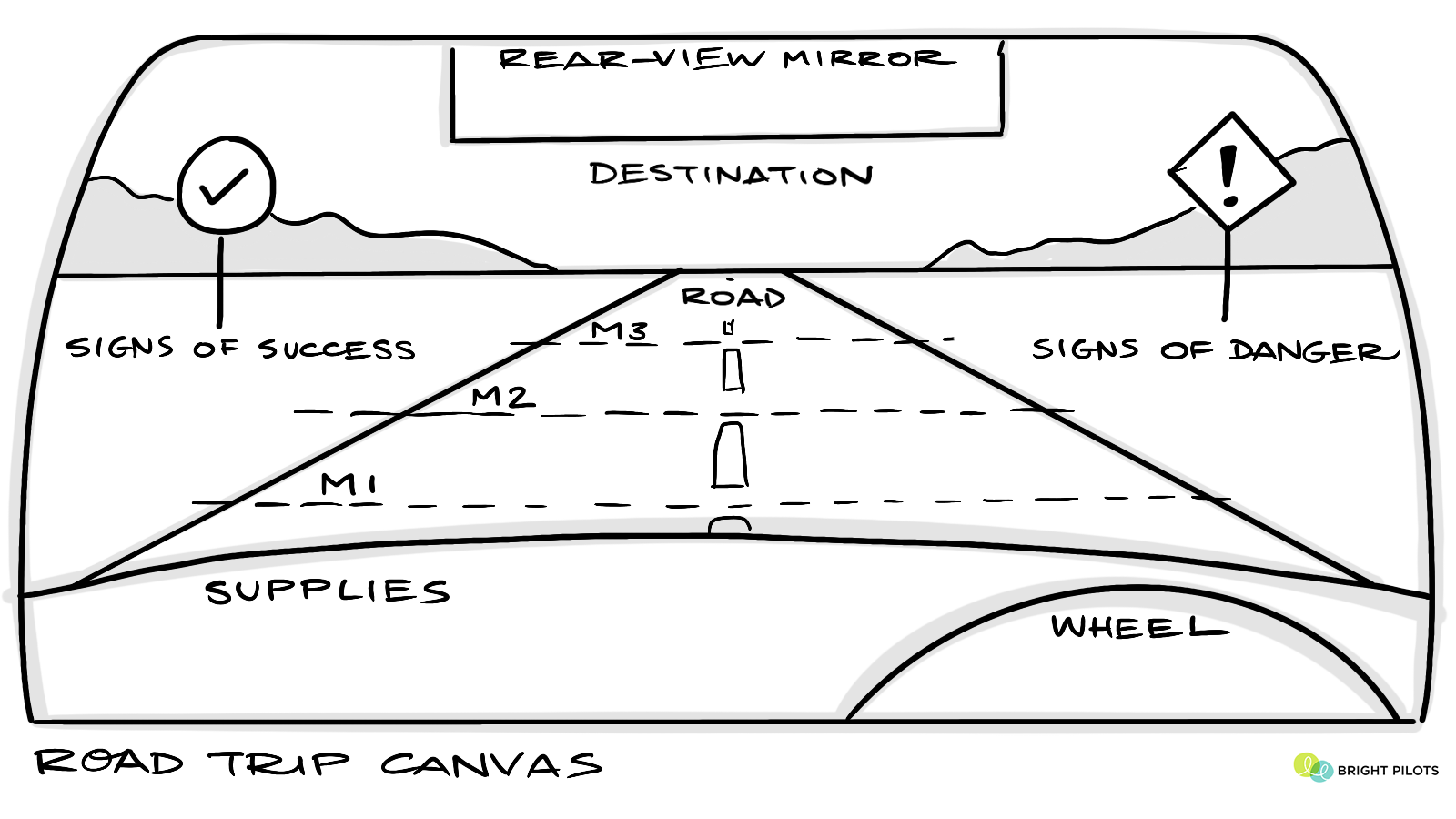
What's on the Road Trip Canvas?
Here's what is in the Road Trip Canvas, and what each section is for:
- The destination
Where are we going, and why? This is where you're aiming for, however far it might be away (time-wise or distance-wise). This represents your overall objective, whether that's a project outcome, a team goal, or the results of a product release of some sort. - The road
How will we get there? This is the path to your objective, and the significant stages you want to get to along the way. You might like to split the road into lanes of separate - but coordinated - work. - The rear-view mirror
Where have we been? This area represents what you've learned, about what worked well and not-so-well before, that will be useful for your trip ahead. - Signs of success
How will we know we're on track? This is what you'll be looking out for - targets and changes in metrics - to know that you're headed for success, and making good progress. - Signs of danger
What do we need to look out for? This area represents risks on the way to your destination. - Supplies
What do we take with us on this trip? This is where you can capture details about people, processes, tools, budgets and systems that you'll need. - The wheel
Who's doing what along the way? This area is for you and your group to capture the main roles and responsibilities. Who's driving? Who's navigating? Who's handing around the snacks? Who's in charge of the music?
When to use the Road Trip Canvas
The Road Trip Canvas is great for meetings and workshops to do with defining and aligning on a main objective, and then working out the main stages and actions for achieving that objective.
This means it's great for project kick-offs, team kick-offs, team building sessions, and team reset sessions.
If you still need to work out an overall vision, a unique value proposition, strategic leverage points for achieving that vision and/or competitive advantage, I'd definitely figure those important aspects out first. They are your "why', whereas objectives and plans are your "what and "how'.
How to use the Road Trip Canvas
Allow at least 2 hours if you are running a fairly straightforward kick-off meeting, or up to a day or more as an offsite if it's for something larger and more complex, with multiple moving parts.
Personally, I'd start with a fun introductory warm-up question. Ask everybody to take turns to introduce themselves, and a favourite (or dreaded!) memory about a road trip.
- Draw it up. Start by drawing your Road Trip Canvas as large as possible on a whiteboard or whiteboard wall. You can use this PDF template as a guide. If you're meeting online or hybrid, I suggest downloading this image template, and importing it as a background in the online collaboration canvas of your choice (e.g. Miro, Mural, LucidSpark or FigJam).
- Walk your group through the sections. This canvas serves as its own agenda. Help your group understand each section, and how it contributes to the meeting's overall outcome of defining and mapping out an objective and a plan.
- Start with the DESTINATION. Take 15 minutes, and ask your group to write down their perspective on what they think the main objective should be (for the team / project / product feature). Get everybody to read all the sticky notes, and discuss any common threads emerging.
Note: you don't have to reach consensus yet. Treat this as an early draft. As the group goes around the other sections, this might shape and refine the objective in some ways. - Take it one section at a time. Spend about 15 minutes in each section (probably 30 minutes for the ROAD), following the same pattern of individual content generation in silence, then reading all content in silence, then offering thoughts, discussion, and summary.
- Step back and see the full picture. It's worth summarising as you go. This makes it much easier for everybody to see a coherent story form across all 7 sections. Ask everybody to reflect on this full picture, and spend a few minutes discussing and summarising, to make sure that everything makes sense, if anything needs revising, and if anybody has any concerns or questions.
- Close out. Spend the last 15 minutes capturing next steps. Who is going to do what, and by when, in light of this map? Where will this map live on? How will it get translated into your project management software?
- Capture. I thoroughly recommend drawing and writing up a refined version of your Road Trip Canvas. Try to aim for a one-sentence summary in each section (and maybe a bit of detail in the ROAD section), to keep it easy to scan and remember. A neat hand-drawn version is perfectly fine! You'll be pleasantly surprised by the great reception you'll get for a hand-drawn one-page summary of your goal and plan.
Try it out
There is so much magic in the making, as well as in what is made. The action of your group going through this canvas together, envisioning and planning visually together, is just as important (maybe more important) as the final plan. Try it out with your team!
